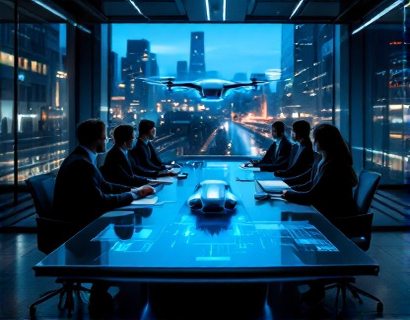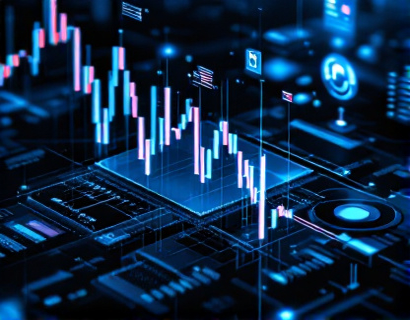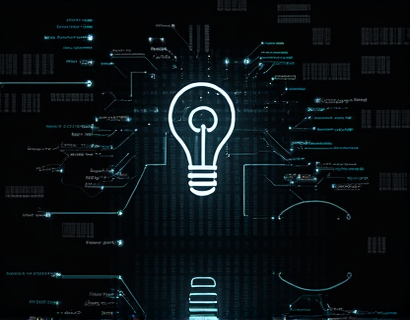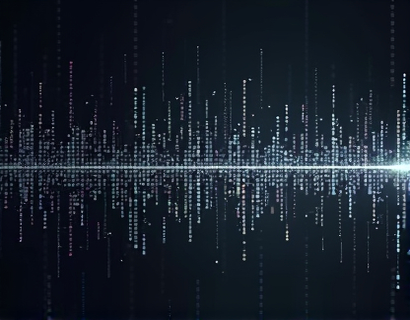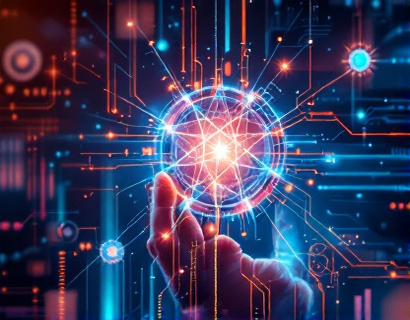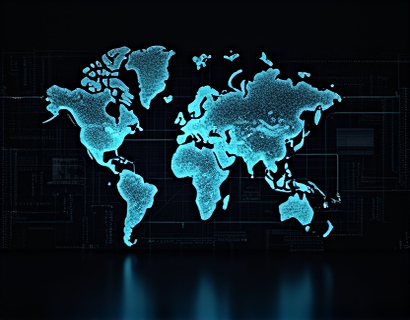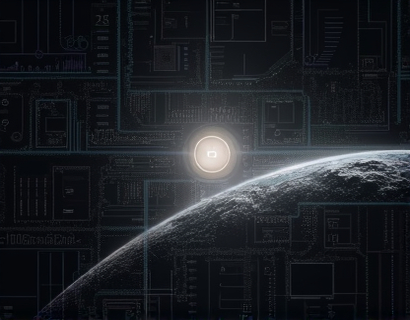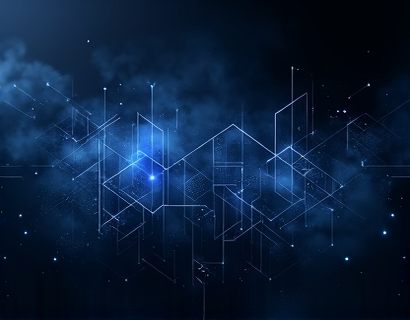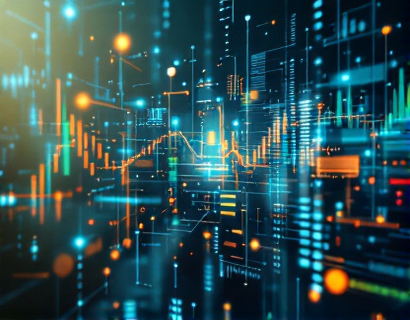Crypto AI: Elevating Ucosystem App Engagement Through Advanced Technology Integration
The integration of blockchain and artificial intelligence (AI) is reshaping the digital landscape, particularly in the realm of app engagement and innovation. This article delves into the transformative impact of these technologies, exploring how they are revolutionizing the way users interact with digital solutions. By examining case studies, industry trends, and expert insights, we aim to provide a comprehensive understanding of the potential and challenges associated with this technological convergence.
The concept of the Ucosystem, a term used to describe an interconnected network of applications and services powered by blockchain and AI, is gaining traction. This ecosystem leverages the unique properties of decentralized technologies and advanced algorithms to create more secure, transparent, and engaging digital experiences. For tech enthusiasts and professionals, understanding the dynamics of the Ucosystem is crucial for navigating the future of digital solutions.
Blockchain: The Foundation of Trust and Transparency
Blockchain technology, at its core, is a decentralized ledger that records transactions across multiple computers in a way that ensures security and transparency. Each block in the chain contains a cryptographic hash of the previous block, a timestamp, and transaction data. This structure makes it nearly impossible to alter any information without detection, thus fostering trust among users.
In the context of the Ucosystem, blockchain serves as the backbone for creating trustless environments where users can interact without intermediaries. Smart contracts, self-executing contracts with the terms directly written into code, automate and enforce agreements, reducing the need for third-party validation. This not only enhances efficiency but also minimizes the risk of fraud and errors.
AI: Enhancing User Experience and Personalization
Artificial intelligence, on the other hand, brings a new dimension to app engagement through advanced data analysis and machine learning algorithms. AI can process vast amounts of data to identify patterns, predict user behavior, and tailor experiences to individual preferences. In the Ucosystem, AI-driven personalization ensures that users receive relevant content and services, increasing their engagement and satisfaction.
For instance, AI-powered chatbots can provide instant customer support, answering queries and resolving issues in real-time. These chatbots can learn from interactions, improving their responses over time and offering a more human-like experience. Additionally, AI can analyze user interactions to optimize app features and user interfaces, making them more intuitive and user-friendly.
Synergy Between Blockchain and AI
The true power of the Ucosystem emerges from the synergy between blockchain and AI. By combining the security and transparency of blockchain with the intelligence and adaptability of AI, developers can create applications that are not only secure but also highly responsive to user needs. This integration opens up new possibilities for innovation and engagement.
One key area where this synergy is evident is in data management. Blockchain ensures that user data is stored securely and privately, while AI algorithms can analyze this data to provide insights and recommendations. This approach respects user privacy while leveraging data to enhance the user experience. For example, a health app could use AI to analyze a user's health data stored on a blockchain, offering personalized health advice and alerts without compromising privacy.
Case Study: Decentralized Social Media Platform
A notable example of the Ucosystem in action is a decentralized social media platform that utilizes both blockchain and AI. This platform allows users to create and share content while maintaining control over their data. Blockchain ensures that content ownership and monetization are transparent and secure, with smart contracts handling content distribution and payment processes.
AI plays a crucial role in content curation and user engagement. The platform's algorithms analyze user interactions to recommend posts and connect users with similar interests. Additionally, AI-driven moderation tools help maintain a safe and respectful community by identifying and filtering out harmful content. This combination of technologies fosters a more engaging and trustworthy social environment.
Challenges and Considerations
While the integration of blockchain and AI offers significant benefits, it also presents several challenges that must be addressed. One major concern is scalability. Blockchain networks, particularly those using proof-of-work consensus mechanisms, can struggle with high transaction volumes and slow processing times. This can impact the real-time capabilities of AI-driven features, leading to a suboptimal user experience.
Another challenge is the complexity of integrating these technologies. Developers need a deep understanding of both blockchain and AI to create robust and efficient applications. This requires a skilled workforce and significant investment in research and development. Moreover, regulatory uncertainties surrounding blockchain and AI can pose risks, especially in industries subject to strict compliance requirements.
Overcoming Scalability Issues
To address scalability, the industry is exploring alternative consensus mechanisms and layer 2 solutions. Proof-of-stake (PoS) and delegated proof-of-stake (DPoS) are more energy-efficient and can handle higher transaction throughput compared to proof-of-work (PoW). Layer 2 solutions, such as sidechains and state channels, offload transactions from the main blockchain, improving performance and reducing costs.
For AI integration, optimizing algorithms and leveraging edge computing can help reduce latency and enhance real-time processing. Edge computing involves processing data closer to the source, minimizing the need to send large amounts of data to centralized servers. This approach not only improves performance but also enhances privacy by keeping sensitive data local.
Future Prospects and Innovations
The future of the Ucosystem is promising, with ongoing advancements in both blockchain and AI set to drive further innovation. One exciting development is the emergence of decentralized machine learning (DeML), which allows AI models to be trained and deployed on a blockchain network. This ensures that data remains decentralized and secure while enabling collaborative learning across multiple nodes.
Another area of innovation is the integration of blockchain with the Internet of Things (IoT). Smart contracts can automate interactions between IoT devices, creating a more seamless and secure connected world. For example, in smart homes, blockchain can ensure that device data is securely shared and managed, while AI can optimize energy usage and enhance user convenience.
Enhancing User Trust and Adoption
Building user trust is essential for the widespread adoption of Ucosystem applications. Transparency, security, and privacy are key factors that influence user confidence. Blockchain's inherent transparency and AI's ability to enhance security measures can significantly boost trust. By providing clear insights into data usage and ensuring that user information is protected, these technologies can encourage more users to embrace digital solutions.
Education and awareness also play a crucial role. As the Ucosystem evolves, it is important to educate users about the benefits and functionalities of these technologies. User-friendly interfaces and intuitive onboarding processes can help demystify complex concepts, making the Ucosystem more accessible to a broader audience.
Conclusion
The integration of blockchain and AI is poised to revolutionize the Ucosystem, offering unprecedented levels of security, transparency, and engagement. While challenges remain, ongoing innovations and collaborative efforts are addressing these issues, paving the way for a more connected and intelligent digital future. For tech enthusiasts and professionals, staying informed about these developments is essential for harnessing the full potential of the Ucosystem and shaping the next generation of digital solutions.





